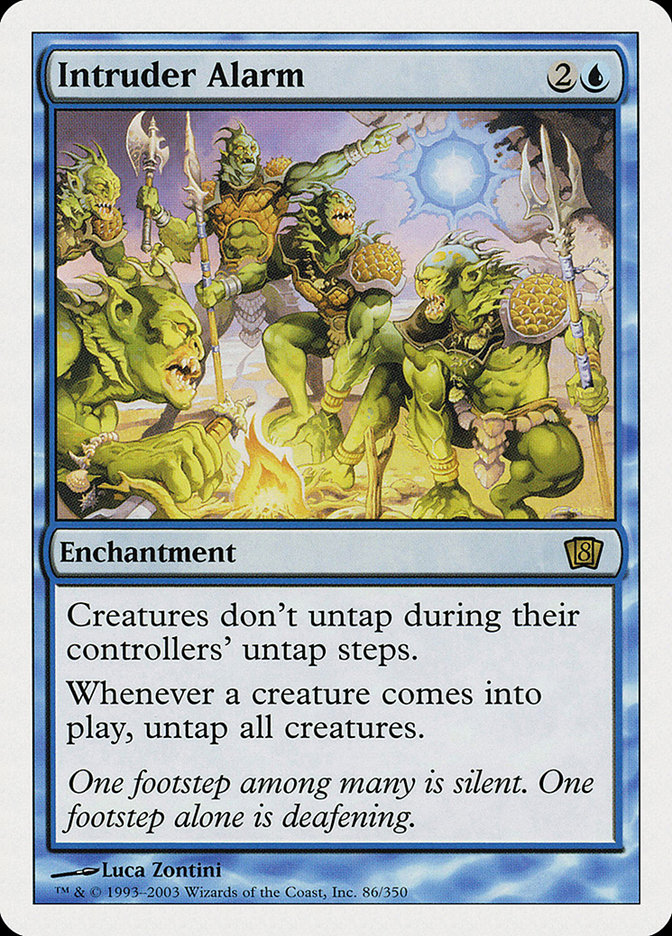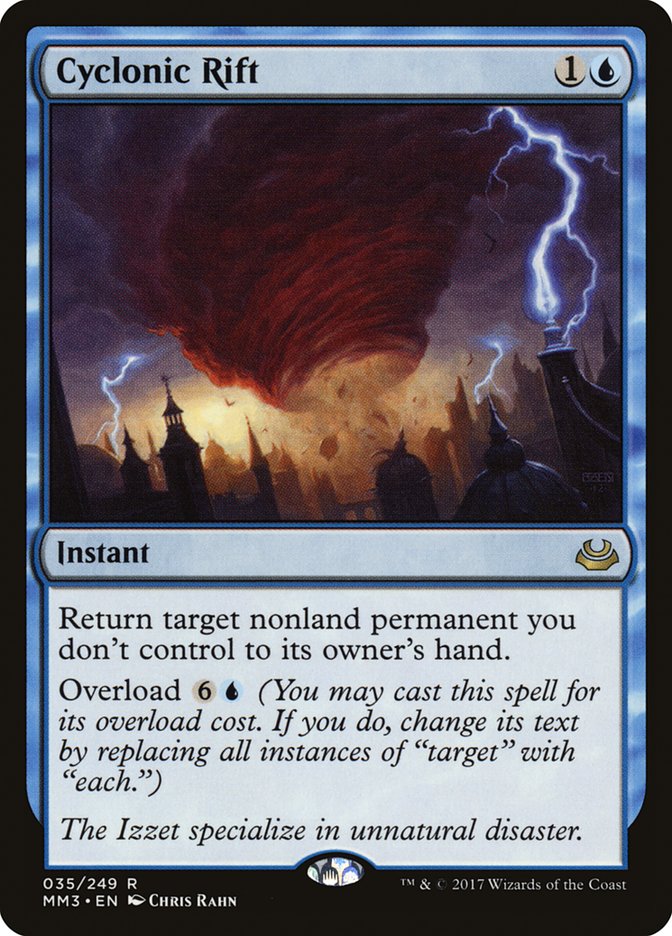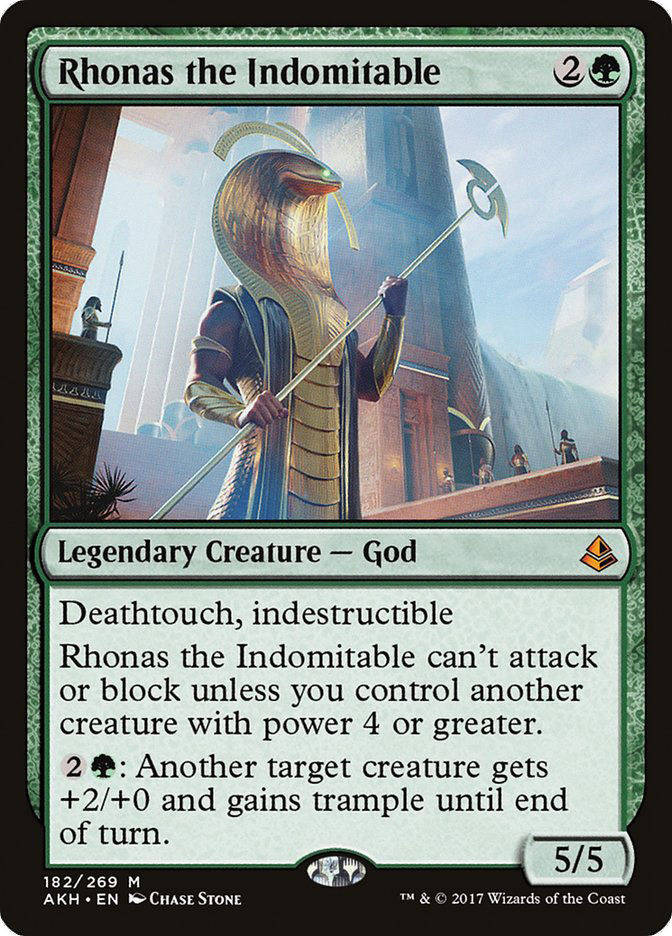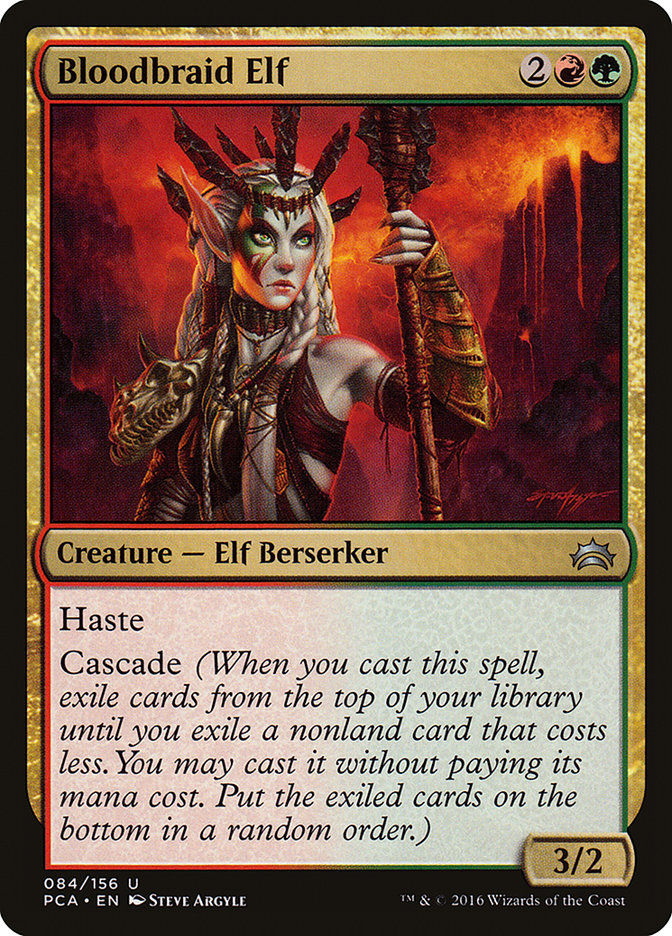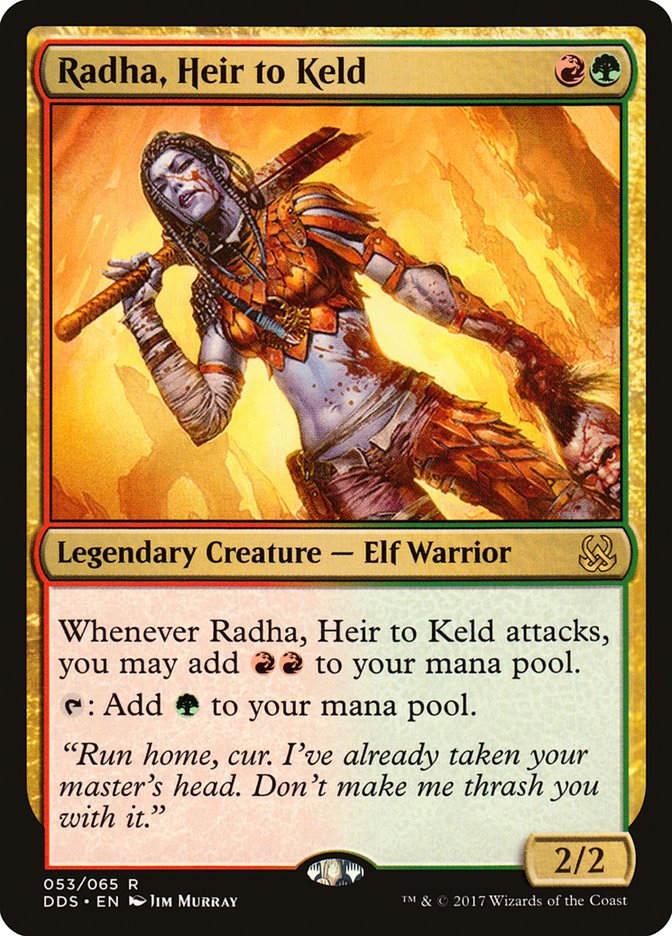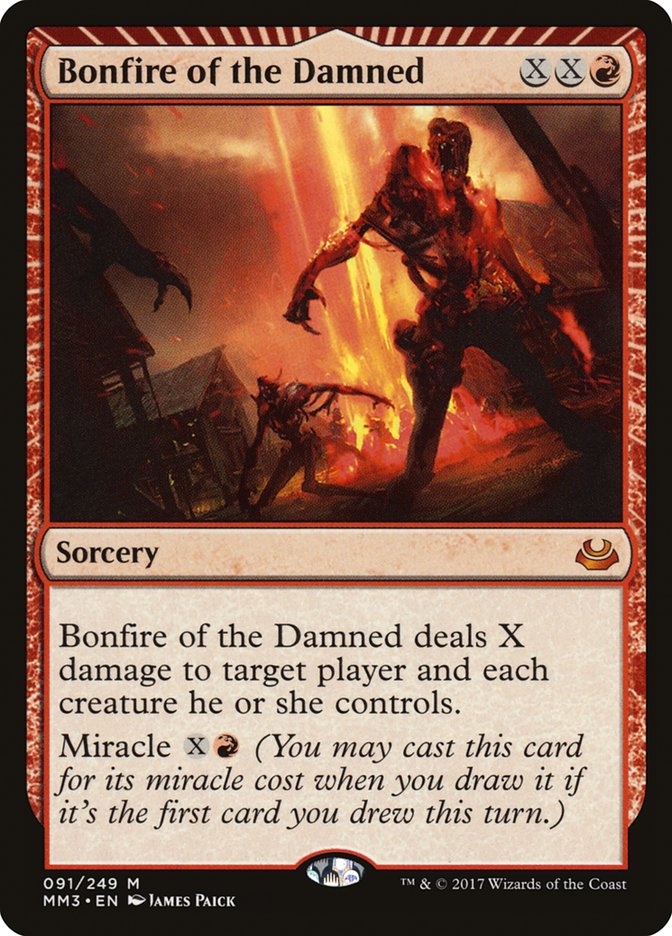Brewing requires different approaches in different formats. The larger the card pool and the more stable an environment is, the less likely you are to be truly innovating. “Work smarter, not harder” is one of my favored mantras, and if someone has done the groundwork for a deck I am considering, then I am not above straight-up jacking the idea.
Modern provides a great environment for this approach. One has but to look at the multitude of Death’s Shadow variants that have appeared since Josh Utter-Leyton and company dominated GP Vancouver 2017 to see a mainstream example of this. I wrote an article a couple of months ago about the various ways to build Soul Sisters decks right now.
One archetype I have particularly enjoyed tinkering with is Elves. Sometimes I have added white for sideboard cards and Mirror Entity. Most often it’s been black for Shaman of the Pack and the free dual land that is Gilt-Leaf Palace. I’ve even gone mono-green for consistency. For some reason I have not yet tried red, even though the old Elfball archetype is a classic that could still be viable. And of course I have not touched blue, because why would I?
Well, it’s time to fix both of those gross oversights.
Is a Blue Elf a Smurf?
The reasons to add blue, a color not exactly renowned for containing a lot of Elves, are not easily spotted. Traditional Elves decks win by having a dominating presence very early in the game and overwhelming (or Overrunning) the opponent before they can find an answer to a lot of very large, very angry little creatures. Blue doesn’t exactly play in that space very often, so the addition seems out of place. There are however three cards that made me really want to do this:
Coiling Oracle has been one of my favorite cards since it was printed. It’s always at least Elvish Visionary, with the added occasional bonus of ramping you. In a deck with so many one-mana creatures, hitting a land will often also mean being able to cast something else. There is a minor cost to revealing the drawn card, but Elves is likely to empty its hand within a turn or two anyway.
Beck is as close to Glimpse of Nature as we can legally get in Modern. When it was printed, people immediately flagged it for inclusion in an Elves deck, but it never really materialized even before the change to the split card rules. Paying two mana, of two different colors, to kickstart your engine in a format without Gaea’s Cradle just proved to be a step too far for most people. Then again, we’re not most people.
The third card should not be a surprise to anyone who has been playing a while. Intruder Alarm goes arbitrarily large with so many things that it’s not even a challenge to think about it anymore. Casting a single Imperious Perfect gets us there, and we are in the market for Elf lords. Fortunately, Beck does not force us to draw cards when a creature enters the battlefield, but if we happen to cast it before we combo off, we can draw our deck. That might be good.
Creatures (30)
- 4 Llanowar Elves
- 4 Coiling Oracle
- 1 Imperious Perfect
- 4 Heritage Druid
- 4 Nettle Sentinel
- 4 Elvish Archdruid
- 2 Ezuri, Renegade Leader
- 3 Elvish Mystic
- 4 Dwynen's Elite
Lands (19)
Spells (11)

Yes, that is a Blue Sun’s Zenith in the deck. Yes, it costs triple blue. Yes, that is insanely greedy. No, that isn’t going to stop me.
I actually considered playing Servant of the Conduit just to make the blue mana requirement easier, which led to me lamenting the lack of Urborg Elf in Modern, which then led to an argument over whether Birchlore Rangers would be too good in Modern, and then I got very sad at how much better this deck could be. Either way, Blue Sun’s Zenith is a win condition that is very hard to beat for most decks. It gets around any Eldrazi shuffles, any injunctions on attacking, and any sort of arbitrarily large life shenanigans. You can also target yourself with it if needed to refill your hand before going off the next turn.
Apart from the unusual inclusion, the deck plays out much like any other Elf deck. What you lose in tutor effects, you gain in extra kill conditions with Intruder Alarm and extra card draw in Beck. It is not out of the question to fuse Beck, but that should be a last resort. You still have the game-winning plays of Elvish Archdruid into Ezuri, Renegade Leader.
I am still toying with the sideboard, but I am very happy with Cyclonic Rift in there. Not many decks can overcome an overloaded Rift, and it should be trivial to cast. I have loved Elvish Champion as a one-of Chord target in the sideboard, basically making your entire team unblockable at will. Anger of the Gods and similar cards are still very scary, so Selfless Spirit and Unified Will are going to be the most important cards in matchups where sweepers are possible. One card I wish I could play is Master Biomancer, but although the ability to make every creature a threat is a valuable one, I cannot justify the investment.
Being able to go arbitrarily large with Imperious Perfect and a single mana creature is obviously good, but you do need to make it through a full turn cycle to win the game that way. Green isn’t exactly replete with effects that grant haste, so playing around removal will be crucial. We do also have the possibility of arbitrarily large amounts of mana, so there should be some consideration given to Duskwatch Recruiter, Walking Ballista, or Rhonas the Indomitable.
One thing I have not explored here is the ability to play some Clone effects. Phyrexian Metamoprh, Phantasmal Image, and Altered Ego would be at the top of my list here, though Cryptoplasm is another possibility. As we go heavier on blue cards, though, we might want to look into Hinterland Harbor or Flooded Grove to help with the fixing.
Red, the Blood of Angry…Elves?
From the wacky to the more traditional, red would seem to be a natural and powerful partner for a strategy that wants to make a whole lot of mana and a whole bunch of creatures. Red has the most payoffs for large amounts of mana and can also easily give haste to the team. For whatever reason, this archetype has not really taken off.
The most obvious inclusion from red is a tournament staple across multiple formats:
I wish.
Poor Bloodbraid Elf has lost most of her powerful friends and yet still sits on the Modern banned list, surrounded by cards people were afraid were too good to hit off a Bloodbraid Elf cascade trigger. It’s not entirely clear that we would even want Bloodbraid Elf here, being a miss off Collected Company and not working well with Chord of Calling or other spells that draw us to red.
I do not understand why more decks do not play Banefire, especially when those decks are looking to generate a lot of mana. It does get stopped by Leyline of Sanctity and Worship, but one of those cards does nothing to our Plan A and the other one is going to beat most versions of the Elf deck anyway. Having a finisher that you can just “set and forget” without having to worry about combat, counterspells, or really anything is a huge plus. I’ve played it in Krark-Clan Ironworks, and as a finisher it is easily one of my favorite options.
Another vastly underrated card is Burning-Tree Shaman. Although it is not an Elf (sadly), the extra points of damage it can get in are far from negligible. The Shaman gets better when you cast it early, and we can easily do so on Turn 2. Decks like Lantern Control and Affinity take large chunks of damage from that ability, and the body is a solid one as well. The creature type should probably mean we only run one or two in the maindeck, but I definitely want this card in my 75.
Radha, Heir to Keld just doesn’t get any respect. Adding RR to your mana pool in the declare attackers step is pretty useless for most decks, and at one point it could have actually hurt us if it wasn’t an optional effect. Although we won’t always be able to use that mana, we will have both Ezuri, Renegade Leader and Collected Company at least, and some number of Chord of Calling as well. We also have a secret weapon in the land base that will make sure we can use that mana every turn if we want to. That she is an Elf and taps for mana are bonuses that should not be overlooked.
Creatures (33)
- 4 Llanowar Elves
- 2 Burning-Tree Shaman
- 2 Boreal Druid
- 3 Radha, Heir to Keld
- 4 Heritage Druid
- 3 Elvish Visionary
- 4 Elvish Archdruid
- 3 Ezuri, Renegade Leader
- 4 Elvish Mystic
- 4 Dwynen's Elite
Lands (18)
Spells (8)

Kessig Wolf Run is a natural fit here. Even if we didn’t have Radha to provide us with red mana every time she attacks, we already know we’re playing a deck with the ability to produce a truckload of mana. The threat of adding trample and a big power boost to any one of our attackers will make blocking 1/1 creatures a nightmare. Two might be a little ambitious, and I could definitely see cutting one for the second Stomping Ground, but you do then run the risk of never seeing one. That said, we are not short on ways to win the game.
The only nonland card in the maindeck that triggers Burning-Tree Shaman is Ezuri, and if we are activating him, we are probably winning anyway. Elvish Visionary is a necessary evil, unfortunately, though it does do a fine job of attacking without taking away available mana while also acting as a speed bump if necessary. We do run a small risk of getting too many duplicate legendary creatures in our hand with extra copies of Radha and Ezuri, but we are otherwise no less explosive than other Elves builds. In fact, we are potentially more explosive with the ability to make use of all our mana creatures without sacrificing combat damage.
The sideboard is where the lack of white cards might hurt us. The main sideboard reason to play red in Modern is Blood Moon, but we definitely do not want that card anywhere near our deck. One thing we do get is Bonfire of the Damned, a nice way to spend a lot of mana and clear out any sort of presence that Affinity, Merfolk, or other creature-heavy decks can amass. It’s a shame it still targets a player and thus does not get around Leyline of Sanctity, but the card is good enough as it is. Heroic Intervention does a decent Selfless Spirit impression, losing the ability to attack for two but gaining the ability to protect Ezuri from a Dismember, for example. Don’t forget Ezuri himself can just protect the rest of the team by regenerating them.
Overall, I think this version is slightly more consistent than the blue one, but significantly less fun. If I had to choose one to play at FNM next week, I would be all over the U/G version and smiling the whole time. It does have a lot of moving pieces that need to come together to win with the arbitrarily large mana plan, but when those pieces do combine, the feeling is oh so sweet.
That’s all we have for this week, folks. As always, thanks for stopping by the LAB – where Lansdell’s Always Brewing. As the year winds down, I am going to be playing and watching a lot less Magic, but I should still be here for your weekly dose of fun-heavy jank. Until next time…Brew On!




